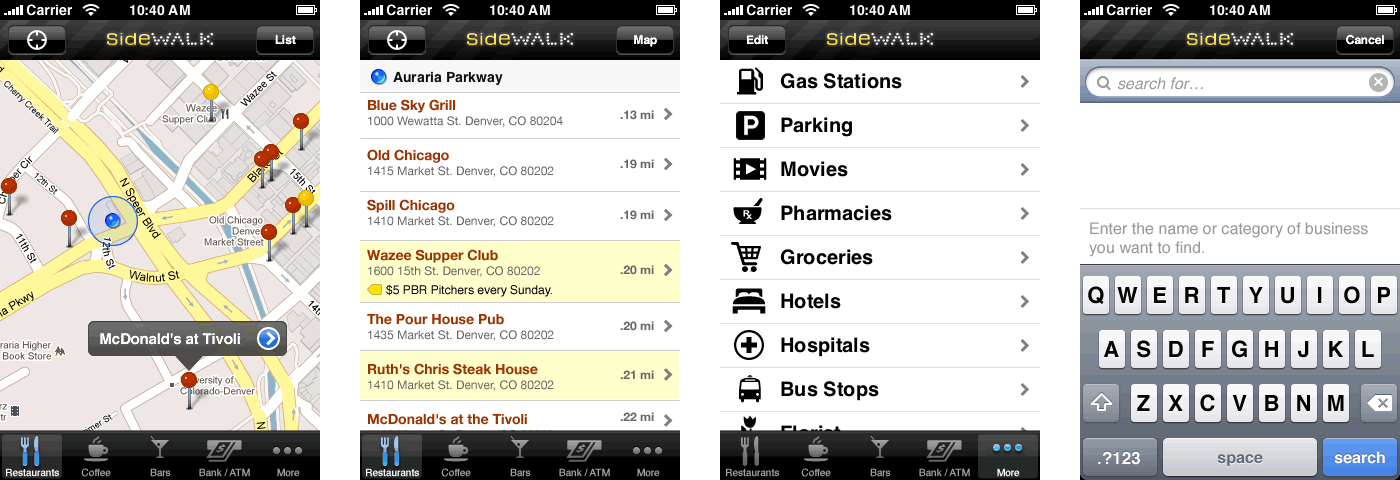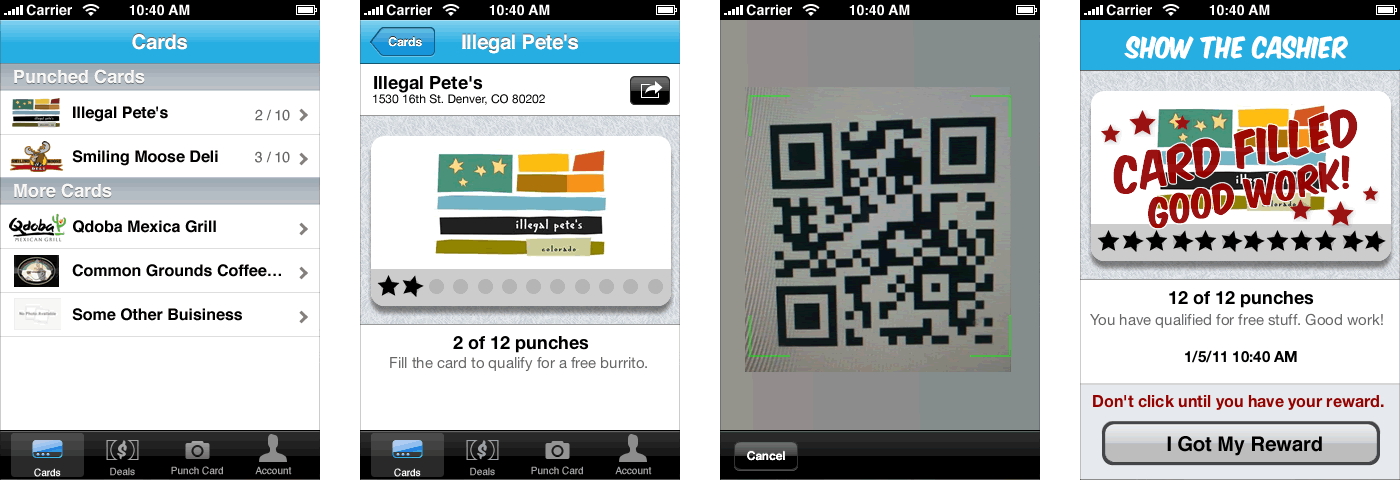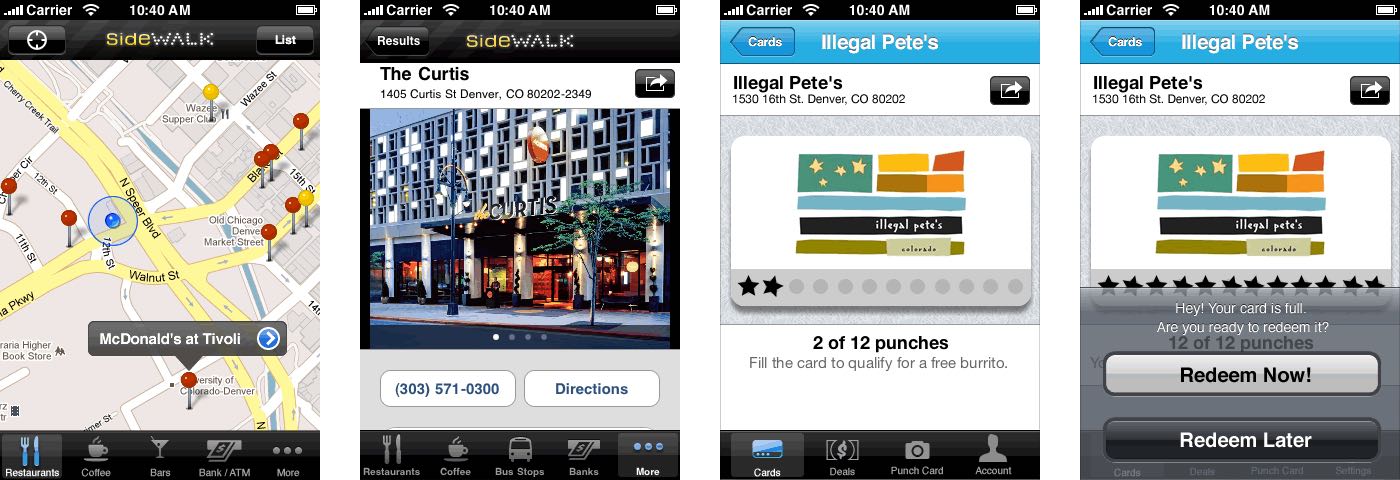Local Matters Labs
Exploratory R&D work
The labs teams was small, two engineers and myself. The goal of the team was to quickly explore ideas. Some of these were potential products for the company. Some were initiatives that our customers were interested in. We worked in two week sprints, typically spending no more than a month on any given project.
We’d get briefed on the concept from the sponsor of the idea, do some research and then decide what we wanted to build. The goal was to have a demo at the end of each two week sprint, and to explore the interesting technical aspects of the problem quickly. I did UX design, and the whole team worked together to flesh out the idea into a compelling demo.
We built both web and mobile apps. The examples below are iOS apps we built in 2010. Looking at them now, I’m struck by how shiny everything was in iOS 4.

Sidewalk
We built this to show our customers a different approach to a local search app. At Local Matters our customers were directory companies (yellow pages). In 2010, they were all building mobile apps, that mostly worked like their sites. You’d launch the app, and enter a search term and a location. Some of the apps would default to searching nearby, but many didn’t.
We thought this was a bit of a missed opportunity. On a mobile device, we thought most people would be looking for nearby businesses in some specific categories.
When you launched Sidewalk, it showed nearby restaurants and offered other categories in the tab bar at the bottom, like coffee, bars, and ATMs. You could search other categories and customize the tab bar by clicking “More….”
We showed the results closest to your location, but highlighted advertisers with yellow pins and backgrounds.

Punch Cards
The idea behind this app was to create a kind of wallet for loyalty cards. Instead of carrying around a bunch of paper cards, you had virtual cards that you punched by scanning a QR code.
The concept was that this could be a directory branded app. The directory companies had large sales staffs. They could offer the app as an new kind of advertising product to their customers. Using the QR code meant that no hardware was needed beyond the phone. The kept the install footprint low. All a business needed to do was print and post the QR code. This was done in a web app we created.
